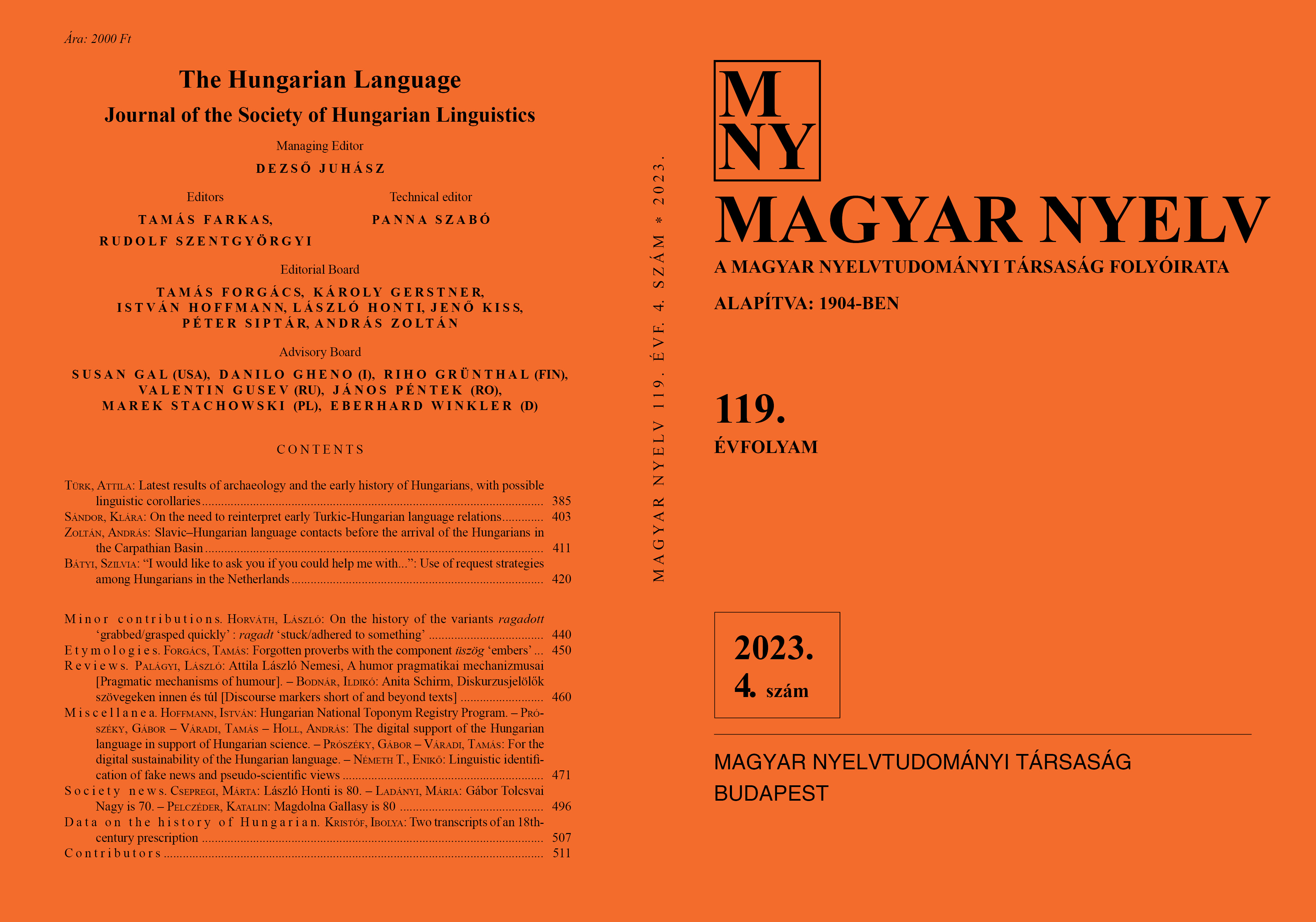Hungarian National Toponym Registry Program
DOI:
https://doi.org/10.18349/MagyarNyelv.2023.4.471Keywords:
toponym research, toponym registries, toponym collection, Hungarian Academy of SciencesAbstract
The prehistory of Hungarian onomastics goes back to the beginning of the 19th century, and over the past two centuries there have been several projects aimed at collecting the Hungarian toponym corpus. The Hungarian National Toponym Registry Program, established with the support of the Hungarian Academy of Sciences, has set itself the goal of collecting the Hungarian toponymicon of the Carpathian Basin in a comprehensive manner, presenting the names to both the professional community and the wider public after adequate documentation and the analysis of the individual names. The work exploring toponyms is carried out as part of a broad academic collaboration, primarily relying on universities of the region as its basis, where the staff of the program is trained and prepared specifically for this task. Online learning materials also facilitate the coherent implementation of the work. The program covers all Hungarian-speaking settlements of the region, but also the toponym use in minority languages in Hungary. In addition to the contemporary toponym corpus, it also takes into account toponym records from historical sources going back to the beginning of Hungarian written culture. Given the diversity of the scholarly uses of place names, the program is necessarily multi- and interdisciplinary in nature, ensured by the professional composition of the staff. The program planned to span a decade will publish toponyms in the form of online databases and printed books, thus updating and significantly expanding the overall corpus of the disciplines that use place names as a resource.
Downloads
Published
Issue
Section
License
Copyright (c) 2023 István Hoffmann

This work is licensed under a Creative Commons Attribution-NonCommercial-NoDerivatives 4.0 International License.
Magyar Nyelv is a Diamond Open Access periodical. Documents can be freely downloaded and duplicated in an electronic format, and can be used unchanged and with due reference to the original source. Such use must not serve commercial purposes. In the case of any form of dissemination and use, Hungarian Copyright Act LXXVI/1999 and related laws are to be observed. The electronic version of the journal is subject to the regulations of CC BY-NC-ND (Creative Commons – Attribution-NonCommercial-NoDerivatives).
The journal permits its authors, at no cost and without any temporal limitation, to make pre-print copies of their manuscripts publicly available via email or in their own homepage or that of their institution, or in either closed or free-for-all repositories of their institutions/universities, or other non-profit websites, in the form accepted by the journal editor for publication and even containing amendments on the basis of reviewers’ comments. When the authors publicize their papers in this manner, they have to warn their readers that the manuscript at hand is not the final published version of the work. Once the paper has been published in a printed or online form, the authors are allowed (and advised) to use that (post-print) version for the above purposes. In that case, they have to indicate the exact location and other data of the journal publication. The authors retain the copyright of their papers; however, in the case of an occasional secondary publication, the bibliographical data of the first publication have to be included.



